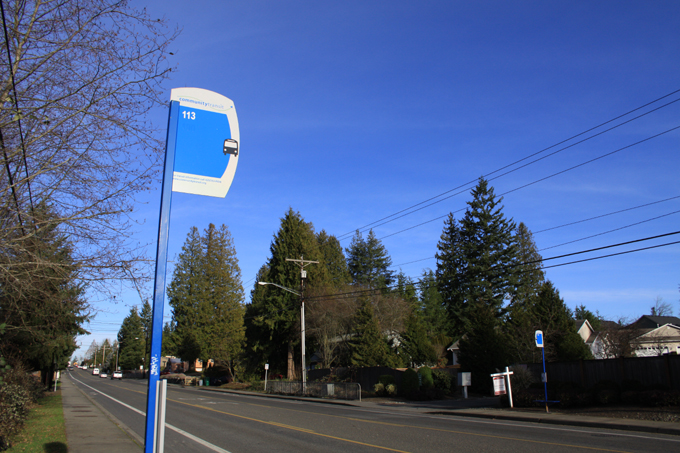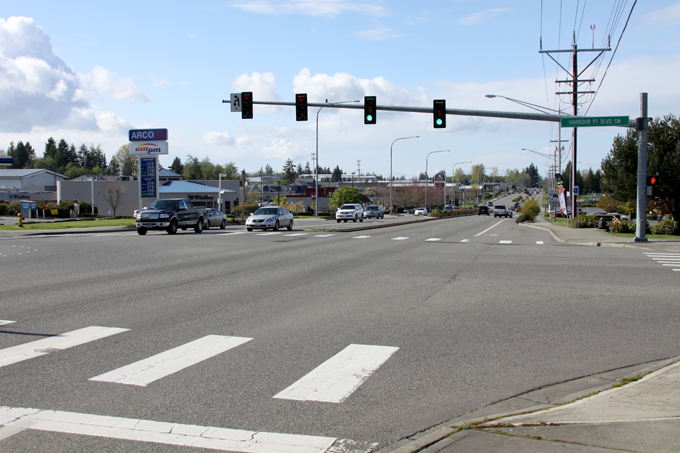Most roads in the annexation area do not have sidewalks, though this also applies to most roads in incorporated Mukilteo outside Harbour Pointe. Outside of major road construction projects, new sidewalks are generally put in when an adjacent property is developed. The main focus for sidewalk additions should be on collector roads such as Lincoln Way, which has sections with no shoulders for pedestrians. Roads such as Shelby Road and Picnic Point Road should be focused on next, since those roads have shoulders which the other roads don’t have.
From Page 28 of the 2006 study, two roads are proposed to connect Harbour Pointe to Picnic Point and Lake Serene. The Harbour Reach Drive extension would extend the road south to Beverly Park Road at 132nd Street SW, and the right-of-way is already owned by the City of Mukilteo. Since the entire road is inside Mukilteo, it could be completed even without annexation.
The Harbour Pointe-Picnic Point road project would build a new road between Harbour Pointe Boulevard and Picnic Point Road along an existing power line right-of-way starting at Endeavour Elementary School. It would allow direct access between the two areas, without having to travel a circuitous route via Mukilteo Speedway (or Harbour Reach Drive), nor having to travel on residential side streets through Windandtide and One Clubhouse Lane (a common complaint of residents there). The road may require acquisition of parts of a few backyards.
As for existing road capacity, heavy traffic appears to be only on State Route 99 and State Route 525 (Mukilteo Speedway), and this traffic is largely from people driving through the annexation area, and not to and from it. There is also some spillover traffic congestion on Beverly Park Road at Mukilteo Speedway. These proposed road projects can divert some traffic away from Mukilteo Speedway, while the traffic issues on State Route 99 are largely outside the scope of Mukilteo.
With more residents being represented by the city (see the Community & Politics section), residents can be better able to convey opinions to local transit agencies and government for better public transportation, which can improve local mobility for residents and decrease traffic congestion. For example, the Community Transit Board includes members which represent cities.


